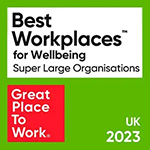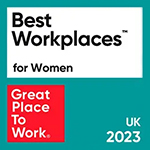Navigating the Culture in a Hybrid World
As many of us enter a new phase of hybrid working, blending remote and onsite, Jennifer shares ideas on how to build an engaging culture in the ‘new normal’
There is a lot of discussion now about how to rebuild culture in the hybrid world. If many of our meetings involve a mix of people onsite and remote, and we are not all rubbing shoulders in an office, how will we ensure mentoring happens? How will we transmit culture, especially for new hires? How will people stay visible enough to be top of mind for that career-defining project, or promotion?
The thing is, we’ll need to be intentional about it. Many have had a lot of practice in the last year-and-a-half of taking part in remote inductions, of making sure all voices are heard in remote meetings, of finding imaginative ways to be sociable.
We now need to be deliberate about this next phase: as we create new patterns of working, hybrid for many, we’ll want to take the best of what we’ve learned and build an engaging culture around it. It might be important not to simply fall back on our old, pre-covid habits of working, nor to act as if we’re still in crisis mode and just scraping by.
Shaping how we work together, with a focus on outcomes
We can all play a role in building the culture. Part of it is about how we consider and involve others, especially those who seem different from us, or whom we don’t yet know well. Asking open questions about how our team-mates would prefer to meet, or how best to update each other, can open our minds to fresh ideas.
When we run blended meetings, what’s the etiquette? It might mean everyone in the office meeting space also has a screen and camara in front of them in the room, to level out the experience. An inclusive chair or facilitator helps, looking out for whose voice is not being heard. We will also want to ensure the after-chat happens in the online comms channel, not only in a corridor. And whether we are onsite or remote, or in a blended meeting, it is worth being conscious that some meetings need clear preparation, agenda and outcomes, while others can be social, just for fun and to enjoy simply being with our colleagues. A lot of time can be saved by being clear which type of meeting is which, too!
In terms of working styles, we can, and should, also consider our own needs, and make suggestions. It could be about shorter meetings to allow for breaks, or deliberately blocking out some of your remote time (if you have it) to make the most of head-down working. What works for our own balance or productivity might just be fine for someone else too. It’s worth putting it out there.
One key is to be clear about what we’re there to deliver, wherever ‘there’ may be in a hybrid pattern. We need to collaborate with those who rely on us, and check together that the things we’re doing are having the right impact.
Reach out, be visible
How we weave all this into a great culture has been shuffled up and thrown in the air in recent times. Let’s not leave those cards just where they land now. Let’s take a moment to think about how we’d like it to look: what can we ourselves bring to building culture in this next phase? Can we mentor someone else, sharing our skills? Can we find creative ways of highlighting our successes?
Perhaps we won’t so easily be visible if we or our bosses are not all sitting in the same building each day. Who could you reach out to this week who would benefit from knowing what you’re working on? Who can best advocate for you at a senior level, and do they know enough about your strengths and your ambitions? Considering where you’d like to progress in your career, who would you like to be ‘seen’ by? What are their priorities and how could you help them?
Finding ways of being useful while also building relationships is a sure way of contributing to a positive culture.
Be the culture!
A little like ‘Be The Change’, attributed to Mahatma Gandhi, we can all use our recent learnings to ‘Be the Culture’. We can see that a hybrid working world needs a rethink in terms of building and sustaining culture. It won’t happen accidentally and it can’t be all about bowls of fruit, or ‘office perks’. Some of it will surely be about clever collaboration spaces in person of course but other aspects of culture will be location-agnostic: it will be about how we relate and connect, wherever we are.
Whose work would you like to know more about? People often feel good about sharing what they do. Could you map out your key stakeholders, people who have an influence over your success as well as those you can support and influence? Are there any gaps? How could you fill them in a creative way? Does it require you to be onsite at certain times or can it be achieved during remote times too?
An engaging culture is almost inevitable if people are feeling good about what they do and why they’re doing it. There is an opportunity for each of us, and our teams, as well as our organisations to make the most of new possibilities, and new ways of working. Many of us have had some new, more direct conversations than we’ve had before in recent times. How can we each build on that now? Let’s aim not only to navigate the culture, but to co-create it.
*****
Jennifer Liston-Smith is Head of Thought Leadership for Bright Horizons
For over 20 years, Jennifer has been relentless in pursuit of innovation, identifying, defining and sharing best practice and 'next practice' for leading global employers in flexible working, family-friendly and wellbeing programmes, closing the gender pay gap and promoting gender-inclusive parenting. She is a sought-after speaker, writer, conference moderator and consultant on these topics and more.




